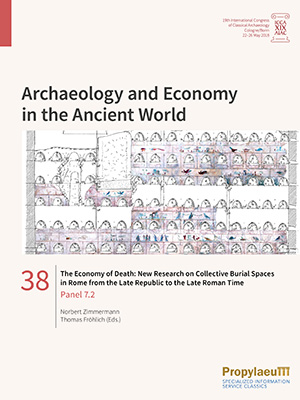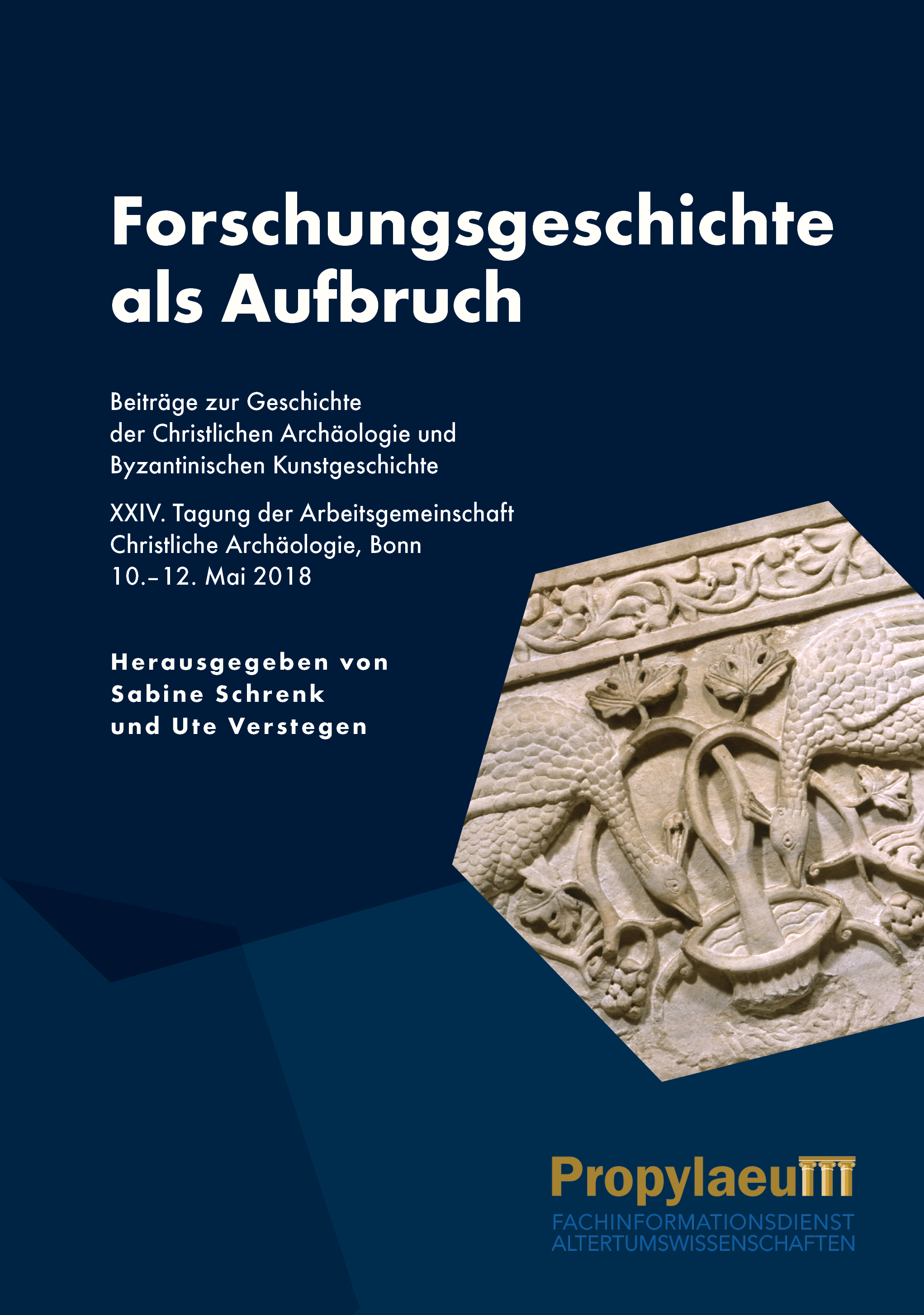Zimmermann, Norbert
The Economy of Death: New Research on Collective Burial Spaces in Rome from the Late Republic to the Late Roman Time: Panel 7.2
Die Beiträge dieses Bandes diskutieren wirtschaftliche Aspekte römischer Grabanlagen, die für eine größere Anzahl von Bestattungen ausgelegt sind, also etwa Kolumbarien, große Hypogäen oder Katakomben. Zugleich wird nach den Besitzern und Nutzern gefragt. Es wird untersucht, inwieweit wirtschaftliche Gründe bei der Erfindung, der Entwicklung und der Nutzung der großen Grabmonumente in Rom eine Rolle spielten und wie diese Bauten die religiösen und sozialen Bedürfnisse ihrer Auftraggeber bzw. der Bestatteten erfüllten, insbesondere in der Zeit des Übergangs von der römischen zur frühchristlichen Zeit. Jüngste Detailstudien zu den römischen Grabbauten lassen interessante Spuren des dynamischen Prozesses der Vorbereitung und Nutzung des Grabraumes dokumentieren, und speziell bei größeren Grabanlagen für weit mehr als eine einzige Familie ist der wirtschaftliche Aspekt von Besitz und Nutzung vielversprechend. Wer plante ein Bauvorhaben, wie und warum wurden ein bestimmter Ort und eine spezifische Architektur gewählt? Wie und wo im ursprünglichen Grabbau sah der Eigentümer für sich und seine Familie den eigenen Bestattungsplatz vor, und wo und auf welche Art und Weise wurden weitere Gräber verkauft oder sogar verschenkt? In den letzten Jahrzehnten mussten sich eine Reihe allgemeiner Studien zu römischen Bestattungen und Bestattungsbräuchen notwendigerweise auf ältere Dokumentationen stützen, während neue und detailliertere Analysen einzelner Monumente oft neue Erkenntnisse liefern und neue Interpretationen nahelegen.
Forschungsgeschichte als Aufbruch: Beiträge zur Geschichte der Christlichen Archäologie und Byzantinischen Kunstgeschichte, XXIV. Tagung der Arbeitsgemeinschaft Christliche Archäologie, Bonn, 10.–12. Mai 2018
Die Beiträge entstanden im Rahmen der XXIV. Tagung der „Arbeitsgemeinschaft Christliche Archäologie zur Erforschung spätantiker, frühmittelalterlicher und byzantinischer Kultur“ (AGCA), die im Mai 2018 in Bonn stattfand. Vertreterinnen und Vertreter der institutionell verankerten Christlichen Archäologie und Byzantinischen Archäologie und Kunstgeschichte in Deutschland, Italien, Spanien, der Türkei, den Niederlanden, Österreich und der Schweiz berichten über die Geschichte des Faches am jeweiligen Standort. Entscheidende Forschungspersönlichkeiten werden vorgestellt, wichtige nationale und internationale Ausgrabungen kommen zur Sprache, ebenso die Aktivitäten der nationalen und internationalen Forschungsstellen und Museen. So entsteht ein breiter Überblick über die Geschichte des Faches, der deutlich macht, wie facetten- und traditionsreich die Christliche Archäologie und Byzantinische Archäologie und Kunstgeschichte ist – ein Fundament für die Zukunft des Faches, für Fortsetzungen und Veränderungen.








